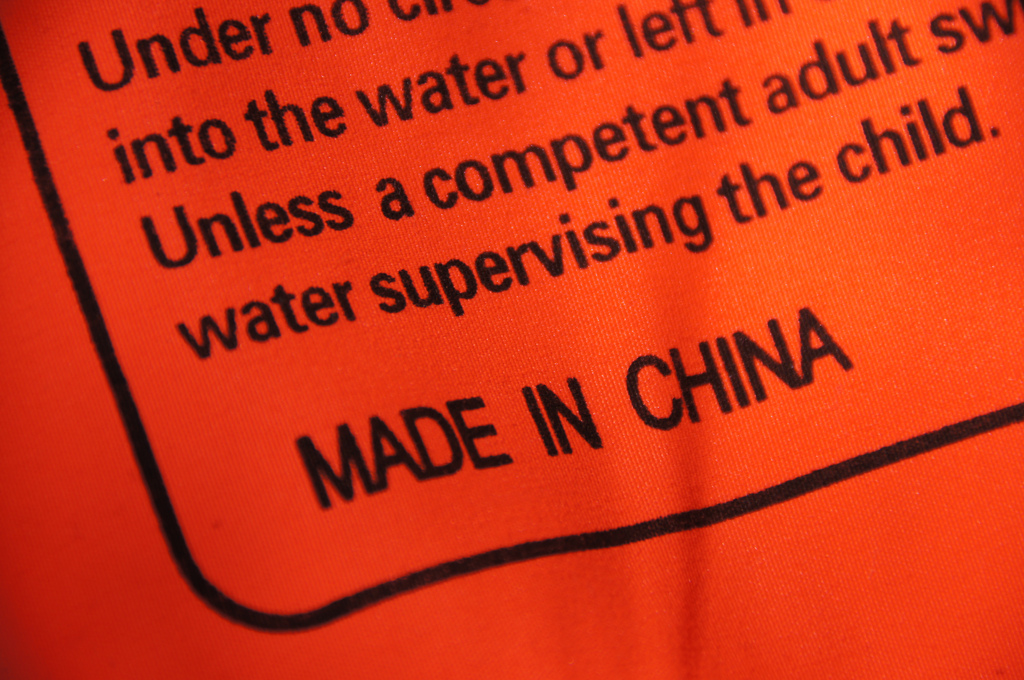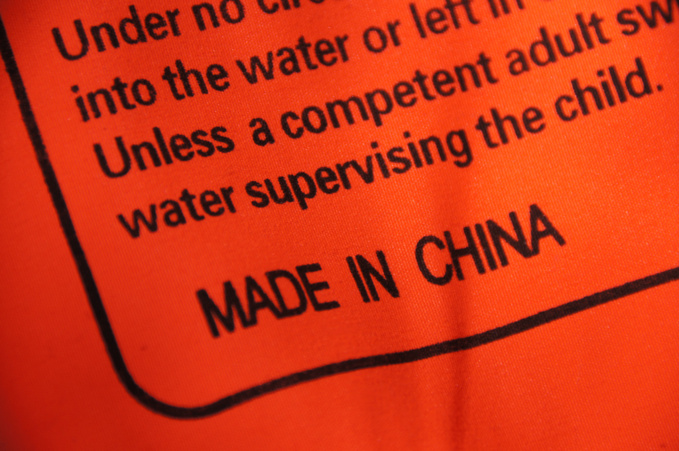It turns out there is. Now, at a new stage of economic and technological development, products manufactured in Europe or in close proximity to its borders are successfully competing with Made in China goods. This trend, which is increasingly being observed in the United States, was subject of the latest research by the international consulting company McKinsey.
The study’s authors, along with six specialists from various fields (fashion industry, supplies, labor market) from McKinsey offices in Frankfurt am Main, Munich, Stockholm and Cleveland, say there are several reasons for the clearly growing trend. First, labor in China is not cheap anymore. As a result, for example, jeans, sewn in Turkey, are now 3 percent cheaper to a European importer compared to those imported from China, if we sum up all costs of production, transportation and customs EU.
“So it’s already wise to return production of some especially easy-to-make garments to Europe or, respectively, to North America,” said one of the study’s co-authors, Karl-Hendrik Magnus. So, jeans from Mexico cost the American importer now 12 percent cheaper than Made in China products.
Besides, the era of Instagram requires a super-fast response to the vagaries of fashion “However, the main reason,” continues Karl-Hendrick Magnus, “is the sharp reduction in delivery times, which allows fashion clothing manufacturers to respond much faster to new trends and adapt their collections to them.” The study notes that a garment made in South-East Asia reaches Western countries by sea within a month. Products from Turkey can be delivered to Germany by truck in 3-6 days (from Mexico to the USA - in just two days).
Today, the ability to quickly respond to any vagaries of fashion is one of indispensable conditions for maintaining competitiveness, explains Achim Berg, head of the fashion industry at McKinsey. “Those times are long gone,” he says, “when consumers waited for a fashionable thing for half a year. Today, fashion manufacturers need flexible structures so as not to miss the trends arising in Instagram and avoid overstocking of warehouses.”
Three quarters of 188 fashion industry top managers surveyed by McKinsey believe that until 2025, the industry will experience a radical change in favor of nearshoring, which means outsourcing (transfer) of business processes to countries located geographically close to the customer.
Based on this survey, the study concludes that Turkey, Morocco and Tunisia can benefit most from the process of returning clothing production from Asia closer to the European market, and directly to Europe itself - the United Kingdom, Portugal and Macedonia. And if we talk about America, it is Mexico, Guatemala, Haiti, Honduras, El Salvador and, to a large extent, the United States themselves.
There is one more circumstance that significantly accelerates the process of returning the manufacturers back from Asia: it is accelerating automation of sewing production.
In the field of automation, the clothing industry is still lagging behind a number of other industries, for example, the automotive industry. But soon it will also be covered by the “fourth industrial revolution”, because, for example, robots and laser technologies for the production of jeans have already been developed, experts from Aachen say.
They believe that in the next ten years, thanks to automation, it will be possible to save about 40 percent of working time when producing complex clothing, and up to 70 percent of working time in manufacture of simple types of clothing, which will significantly reduce production costs. And this will be an additional strong incentive for going back.
In addition, co-author of McKinsey’s study Saskia Hedrich points out that automation of production "reduces consumption of water, energy and chemicals," and nearshoring shortens the transport route. All this contributes to the fact that the environment is less polluted, and this can serve as an additional marketing argument. After all, the absolute majority of the surveyed top managers of the fashion industry have no doubt: in the coming years, for customers (at least in Europe and America), one of the key criteria when choosing clothes will be the environmental friendliness of their production.
source: dw.de
The study’s authors, along with six specialists from various fields (fashion industry, supplies, labor market) from McKinsey offices in Frankfurt am Main, Munich, Stockholm and Cleveland, say there are several reasons for the clearly growing trend. First, labor in China is not cheap anymore. As a result, for example, jeans, sewn in Turkey, are now 3 percent cheaper to a European importer compared to those imported from China, if we sum up all costs of production, transportation and customs EU.
“So it’s already wise to return production of some especially easy-to-make garments to Europe or, respectively, to North America,” said one of the study’s co-authors, Karl-Hendrik Magnus. So, jeans from Mexico cost the American importer now 12 percent cheaper than Made in China products.
Besides, the era of Instagram requires a super-fast response to the vagaries of fashion “However, the main reason,” continues Karl-Hendrick Magnus, “is the sharp reduction in delivery times, which allows fashion clothing manufacturers to respond much faster to new trends and adapt their collections to them.” The study notes that a garment made in South-East Asia reaches Western countries by sea within a month. Products from Turkey can be delivered to Germany by truck in 3-6 days (from Mexico to the USA - in just two days).
Today, the ability to quickly respond to any vagaries of fashion is one of indispensable conditions for maintaining competitiveness, explains Achim Berg, head of the fashion industry at McKinsey. “Those times are long gone,” he says, “when consumers waited for a fashionable thing for half a year. Today, fashion manufacturers need flexible structures so as not to miss the trends arising in Instagram and avoid overstocking of warehouses.”
Three quarters of 188 fashion industry top managers surveyed by McKinsey believe that until 2025, the industry will experience a radical change in favor of nearshoring, which means outsourcing (transfer) of business processes to countries located geographically close to the customer.
Based on this survey, the study concludes that Turkey, Morocco and Tunisia can benefit most from the process of returning clothing production from Asia closer to the European market, and directly to Europe itself - the United Kingdom, Portugal and Macedonia. And if we talk about America, it is Mexico, Guatemala, Haiti, Honduras, El Salvador and, to a large extent, the United States themselves.
There is one more circumstance that significantly accelerates the process of returning the manufacturers back from Asia: it is accelerating automation of sewing production.
In the field of automation, the clothing industry is still lagging behind a number of other industries, for example, the automotive industry. But soon it will also be covered by the “fourth industrial revolution”, because, for example, robots and laser technologies for the production of jeans have already been developed, experts from Aachen say.
They believe that in the next ten years, thanks to automation, it will be possible to save about 40 percent of working time when producing complex clothing, and up to 70 percent of working time in manufacture of simple types of clothing, which will significantly reduce production costs. And this will be an additional strong incentive for going back.
In addition, co-author of McKinsey’s study Saskia Hedrich points out that automation of production "reduces consumption of water, energy and chemicals," and nearshoring shortens the transport route. All this contributes to the fact that the environment is less polluted, and this can serve as an additional marketing argument. After all, the absolute majority of the surveyed top managers of the fashion industry have no doubt: in the coming years, for customers (at least in Europe and America), one of the key criteria when choosing clothes will be the environmental friendliness of their production.
source: dw.de



















